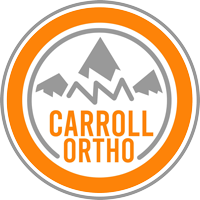For orthodontic care tailored to your unique needs, visit Carroll Orthodontics at 1116 W Main St, Hamilton, MT 59840, or 3920 US Hwy 93, Stevensville, MT 59870, or call (406) 363-2200.
The Role of Retainers in Preventing Teeth Shifting Over Time
Retainers may not be the first thing that comes to mind when you think about maintaining a perfect smile, but they play a crucial role in your dental health. After investing time and effort into braces or other orthodontic treatments, it’s essential to protect those results. Teeth can shift over time—often without you even noticing. That’s where retainers come in, acting as the safeguard for your hard-earned straight teeth.
If you're living in Hamilton or Stevensville, MT, understanding how retainers work can make all the difference in keeping your smile just right. Let’s dive deeper into what these dental devices are all about and discover why they’re more important than you might have realized.
What are Retainers and Why Are They Important?
Retainers are custom-made devices designed to hold teeth in their new positions after orthodontic treatment. They come in various forms, such as clear plastic or wire and acrylic combinations. Their primary purpose is simple yet critical: to prevent your teeth from shifting back to their original alignment.
After braces are removed, your mouth undergoes a settling phase. During this time, bones and tissues adjust around the newly positioned teeth. Without a retainer, these natural forces can push teeth out of place, leading to misalignment over time.
In Hamilton and Stevensville, MT, many people underestimate the importance of retainers. However, they are essential for maintaining that perfect smile you worked hard to achieve. By wearing a retainer consistently, you ensure lasting results from your orthodontic journey while promoting overall oral health.
The Process of Getting a Retainer
Getting a retainer is an important step in maintaining your smile. The process typically begins with a visit to your orthodontist or dentist. They'll assess your teeth and discuss the best type of retainer for you.
Next, impressions of your teeth are taken. This can involve using a mold that captures every detail, or digital scanning technology that creates a 3D image. Both methods ensure that the retainer fits snugly.
Once the impressions are complete, it usually takes about one to two weeks for the lab to create your custom retainer. When it's ready, you'll return to receive it and get instructions on how to wear and care for it.
Your provider will check the fit and make any necessary adjustments before sending you home with this essential tool for keeping your teeth in place.
Different Types of Retainers
Retainers come in various types, each designed to meet specific needs. The most common are fixed and removable retainers.
- Fixed retainers are often bonded directly to the back of your teeth. This type is discreet and ensures that teeth remain in place without requiring daily discipline.
- On the other hand, removable retainers can be taken out at will. They’re typically made from clear plastic or acrylic materials, allowing for easy cleaning and maintenance.
- Another option is the Hawley retainer, which features a metal wire framework. This design provides durability while still being adjustable for comfort.
- For those who prefer a more modern touch, there's also the clear aligner-style retainer. These offer an almost invisible solution that's perfect for adults looking to maintain their smile discreetly.
Each type serves its purpose effectively; choosing one depends on your lifestyle and orthodontic goals.
How Often Should You Wear Your Retainer?
Wearing your retainer consistently is crucial for maintaining that beautiful smile. In general, after orthodontic treatment, it's recommended to wear your retainer all day and night for the first few months.
Once you’ve settled into a routine, many dentists suggest transitioning to nighttime wear only. This can often suffice in keeping teeth aligned without the pressure of daytime use.
However, each individual’s needs may differ based on their specific dental situation. Some people might find they need more frequent wear than others.
Listening to your dentist's advice is essential. They know best how often you should keep it on based on your unique alignment progress.
Establishing a habit early makes a big difference in long-term results. Regularly checking if it fits comfortably helps ensure its effectiveness and keeps teeth from shifting over time. Contact us to learn more.
Tips for Maintaining Your Retainer
- Keeping your retainer clean is essential for oral health. Rinse it daily with lukewarm water to remove bacteria and food particles. Avoid hot water, as it can warp the material.
- Use a soft toothbrush and mild soap occasionally for deeper cleaning. Toothpaste may be too abrasive, so stick to gentle methods.
- Store your retainer in its case when not in use. This protects it from damage or loss. Make sure the case itself is clean as well; it's a breeding ground if neglected.
- Avoid exposing your retainer to extreme temperatures or harsh chemicals like bleach. These can compromise its integrity over time.
- Schedule regular check-ups with your orthodontist in Hamilton and Stevensville, MT. They can provide professional cleaning tips tailored just for you while ensuring your retainer remains effective throughout its lifespan.
The Long-Term Benefits of Wearing a Retainer
Wearing a retainer offers numerous long-term benefits that go beyond just maintaining your smile.
- One of the most significant advantages is the prevention of teeth shifting. After orthodontic treatment, teeth naturally want to drift back to their original positions. A retainer keeps them in place.
- Moreover, retainers can help maintain proper bite alignment. This ensures optimal chewing and speaking functions over time, reducing potential jaw issues.
- Another benefit is enhanced oral health. When teeth are properly aligned, it’s easier to clean them effectively, minimizing the risk of cavities and gum disease.
- Retainers also contribute to improved self-esteem. A straight smile boosts confidence in social situations and professional environments alike.
- Using a retainer can save you money on future dental treatments by preventing misalignment-related issues down the road. Investing time in wearing one pays off significantly as years pass by.
Conclusion
Retainers play a crucial role in maintaining your smile after orthodontic treatment. They help ensure that the hard work put into aligning your teeth doesn’t go to waste. By understanding what retainers are and their significance, you’re more likely to appreciate their value.
The journey of getting a retainer is straightforward and involves collaboration with your orthodontist. Knowing the different types available can also guide you in making informed decisions about which fits best for your lifestyle and dental needs.
Wearing your retainer as prescribed is key to preventing teeth shifting over time. By developing a routine around it, you'll find it becomes second nature. Additionally, caring for your retainer properly will extend its lifespan and effectiveness.
The long-term benefits of wearing a retainer far outweigh any initial inconvenience. You’ll enjoy the confidence of a beautifully aligned smile while protecting your investment in dental health.
For those seeking options or advice on retainers in Hamilton and Stevensville, MT, expert guidance is always just an appointment away. Prioritize your oral health today by embracing these essential tools!
Location
- MON - THU8:00 am - 5:00 pm
- FRIBy appointments only
- SAT - SUNClosed
- MON - THU8:00 am - 5:00 pm
- FRIBy appointments only
- SAT - SUNClosed








